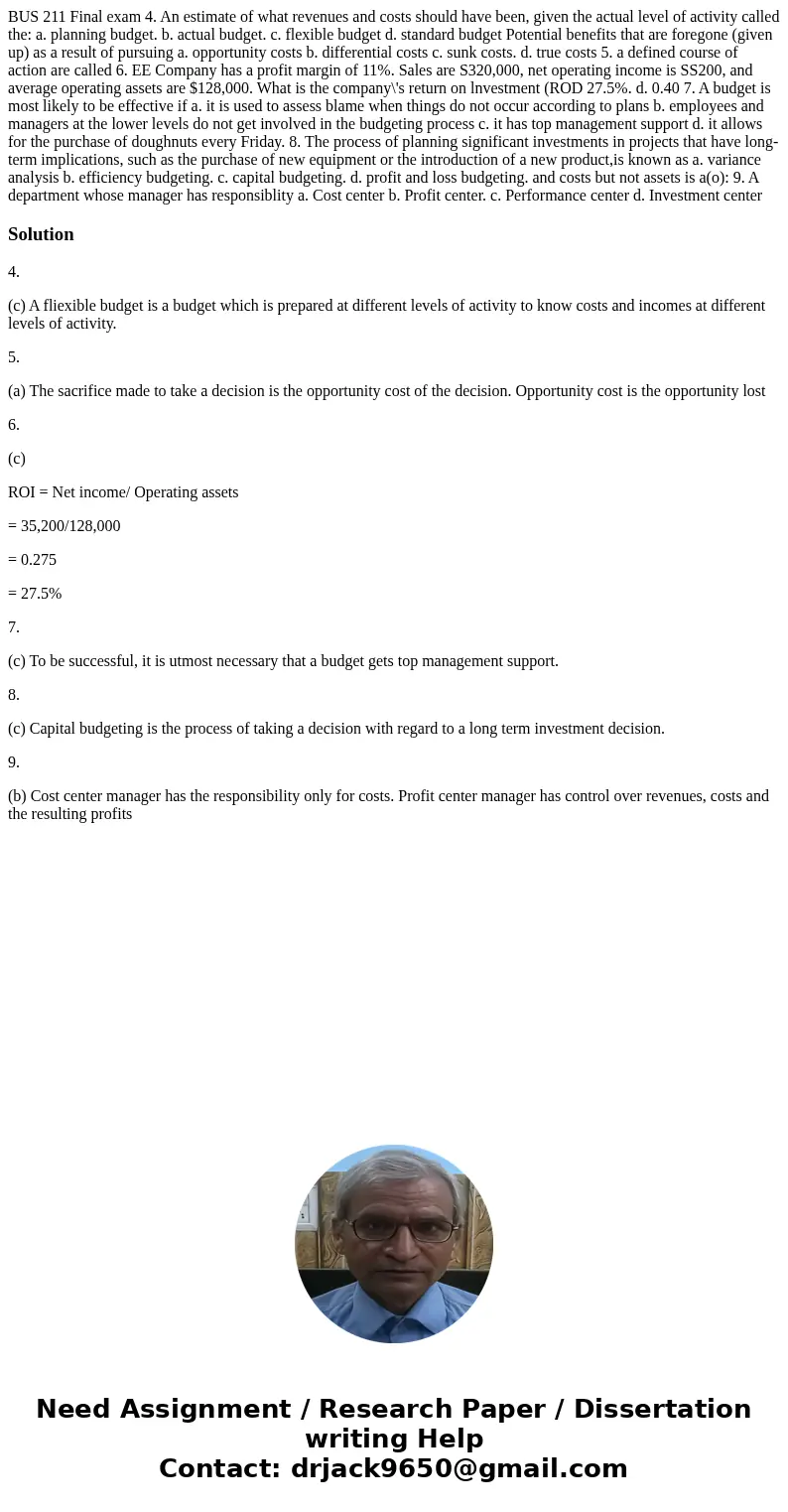BUS 211 Final exam 4 An estimate of what revenues and costs
BUS 211 Final exam 4. An estimate of what revenues and costs should have been, given the actual level of activity called the: a. planning budget. b. actual budget. c. flexible budget d. standard budget Potential benefits that are foregone (given up) as a result of pursuing a. opportunity costs b. differential costs c. sunk costs. d. true costs 5. a defined course of action are called 6. EE Company has a profit margin of 11%. Sales are S320,000, net operating income is SS200, and average operating assets are $128,000. What is the company\'s return on lnvestment (ROD 27.5%. d. 0.40 7. A budget is most likely to be effective if a. it is used to assess blame when things do not occur according to plans b. employees and managers at the lower levels do not get involved in the budgeting process c. it has top management support d. it allows for the purchase of doughnuts every Friday. 8. The process of planning significant investments in projects that have long-term implications, such as the purchase of new equipment or the introduction of a new product,is known as a. variance analysis b. efficiency budgeting. c. capital budgeting. d. profit and loss budgeting. and costs but not assets is a(o): 9. A department whose manager has responsiblity a. Cost center b. Profit center. c. Performance center d. Investment center 
Solution
4.
(c) A fliexible budget is a budget which is prepared at different levels of activity to know costs and incomes at different levels of activity.
5.
(a) The sacrifice made to take a decision is the opportunity cost of the decision. Opportunity cost is the opportunity lost
6.
(c)
ROI = Net income/ Operating assets
= 35,200/128,000
= 0.275
= 27.5%
7.
(c) To be successful, it is utmost necessary that a budget gets top management support.
8.
(c) Capital budgeting is the process of taking a decision with regard to a long term investment decision.
9.
(b) Cost center manager has the responsibility only for costs. Profit center manager has control over revenues, costs and the resulting profits

 Homework Sourse
Homework Sourse